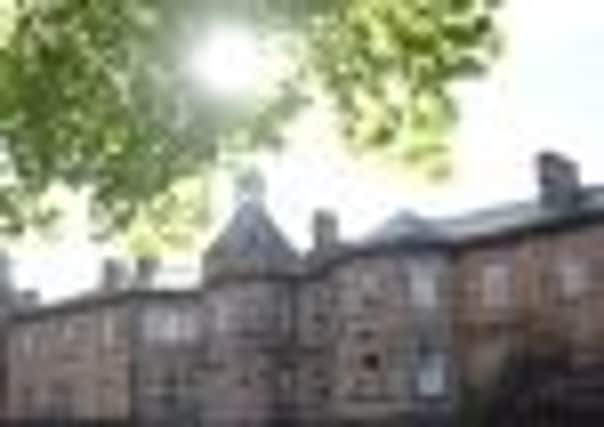State of mind: How the Royal Edinburgh Hospital helped change attitudes to mental illness


ROBERT Fergusson had already carved himself a reputation as a talented poet when he bumped into the Scottish preacher John Brown in Haddington Cemetery in 1772. Fergusson, the 22-year-old copyist and author of Auld Reekie, had until then been a convivial man, at the heart of Edinburgh’s literary and social scene. But soon after encountering the theologian, he became gripped by “religious melancholia”. He shunned the limelight, preferring to stay at home and read his Bible, and his works took on a gloomy air. Then, a year after predicting he might share the fate of John Cunningham, a poet who had died in a mental asylum in Newcastle, Fergusson suffered a brain injury in a fall.
With his mother struggling to look after him, he was committed to Darien House, part of the city’s Bedlam asylum, on Bristo Place, where those with mental illnesses were offloaded. The conditions were terrible – food was in short supply and the use of restraints was commonplace.
Advertisement
Hide AdWithin weeks Fergusson was dead. His brutal end deprived Scotland of another potential bard (Robert Burns, who was inspired by his verse, erected a memorial on his unmarked grave in Canongate Kirkyard). But it also had a second, more positive legacy.


Among those shocked by his plight was Edinburgh-based physician Andrew Duncan. Having visited Fergusson at Darien House, Duncan was all too aware of the inhumane treatment meted out to those who suffered any kind of mental breakdown. With support from 18th-century notables, including the Duke of Buccleuch, he pledged to set up a better institution for the mentally ill, one that would draw on best practice from all over the world and would focus on rehabilitation.
Now that institution, the Royal Edinburgh Hospital in Morningside, is preparing to celebrate its 200th anniversary. Today, hundreds of patients a year benefit from its services. Set within large, landscaped grounds, it has units specialising in alcohol and substance abuse, eating disorders, brain injuries and forensic psychiatry.
The hospital has led the way in many fields particularly in the treatment of post-traumatic stress disorders, where pioneering work with First World War veterans suffering shellshock, at nearby Craiglockart War Hospital, led to the formation of the Jordanburn Nerve Centre in 1929 and the Rivers Centre in 1997. The hospital was also instrumental in setting up Veterans First Point, a support group for former soldiers.
About to embark on a massive redevelopment programme, the REH owes its success to the tenacity of Duncan, who led a 40-year fundraising campaign to make his vision for a more humane attitude towards those with mental illnesses a reality.


Back then Darien House and other asylums did little more than control the inmates’ outbursts, often in the most barbaric fashion. “You wouldn’t have found many doctors there and the attendants relied heavily on mechanical restraints – straitjackets, metal harnesses and chains,” says Dr John Crichton, the REH’s clinical director. “There were all sorts of horrific management strategies, so for example if an attendant was bitten it was common practice for the patient to have all their teeth taken out.” By the late 18th century, however, the issue of mental health was rising up the political agenda, not least because King George III was at that time suffering bouts of insanity.
Advertisement
Hide AdAcross Europe there were pockets of good practice: in France, psychiatrist Philippe Pinel rejected the use of restraints and bleeding, purging and blistering in favour of talking to and observing patients. The Retreat in York, founded by Quakers in 1792, also treated the mentally ill with sympathy and respect.
Nevertheless, it was only when the British government handed over £2,000 from estates forfeited during the Jacobite rebellion that Duncan was able to buy the site in Morningside which was to become East Wing, the hospital’s first base. In 1807, a Royal Charter was granted by George III himself and in 1813 the hospital opened its doors for the first time. Known at that time as the Edinburgh Lunatic Asylum, it at first took only those who could afford to pay. But by the 1840s, enough money had been raised to build the West Wing – the part of the hospital that still stands, and the first non-paying patients were accepted, allowing Darien House to close at last.
Advertisement
Hide Ad